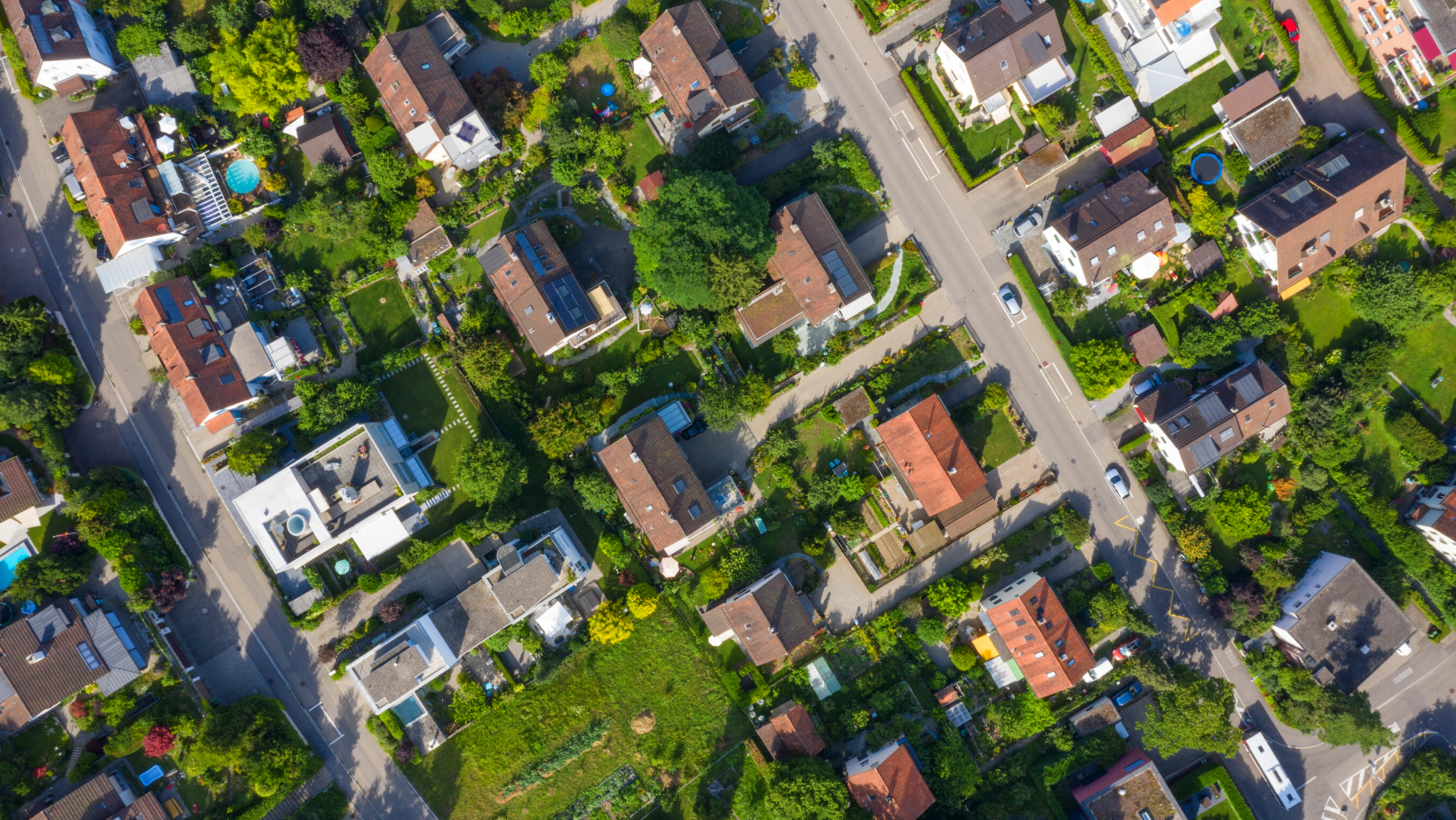
"Location, Location, Location"
"Location, Location, Location"
In the new normal of our COVID-19 economy, it seems like it’s business as usual (with a slight twist) for some and a complete disruption to the normal business cycle for others. We frequently discuss the performances of various market indexes in our market updates; but for this commentary, we focus on breaking down what’s happening within the various sectors that comprise the S&P 500 Index – the primary U.S. market index – to provide you with a better understanding of how the markets are anything but business as usual.
During this period of social distancing, many of us have spent more time than we’d like to admit binge-watching Netflix shows or turning to the tried-and-true HGTV rabbit hole for endless episodes of “Fixer Upper,” “Flip or Flop,” and “Love It or List It.” If you’ve done your HGTV due diligence, you know the age-old adage of “location, location, location” when buying real estate, and this simple yet invaluable real-estate maxim holds true for investing in the new COVID-19 economy – instead of “location,” think “sector, sector, sector.”
As of May 8, the S&P 500 Index is down 8.6% for the year, though it has been a tale of two markets. When you break down the individual sector performances of the 11 sectors within the index, you’ll see the extraordinary dispersion in returns among the sectors. The technology, health care, and communication services sectors have led the way with the consumer discretionary and consumer staples sectors also outperforming the overall index. The remaining six sectors have underperformed the index with energy, financials, and industrials deep into negative territory for the year. The numerical performances of these 11 sectors are displayed in the chart below.
S&P 500 Index: Sector Performance Through May 8

The best performing sectors – technology, health care, and communication services – share a few common characteristics: These sectors were not directly affected by the virus or the collapse in energy prices, and they generally have healthy balance sheets. These three sectors have become prime real estate for investors; think of the companies in these sectors as being houses in the best neighborhoods where everybody wants to live. While these companies sold off in the initial market panic, buyers quickly rushed back to them when market sentiment shifted positive in late March. Today, many of the companies within these three sectors are near their pre-COVID-19 highs.
On the proverbial other side of the tracks, we have the not so desirable neighborhoods of energy, financials, and industrials, which are the biggest year-to-date detractors to the overall performance of the S&P 500 Index. As to common characteristics, both the energy and industrial sectors are capital intensive, and the dislocation in the capital markets has pressured the share prices of such companies that rely heavily on the debt markets to maintain their operations. Additionally, both sectors have been directly impacted by the shutdown of the global economy, and the energy sector, of course, has been suffering from the collapse in oil prices. Unfortunately, the financials got dragged into the fray because they have provided the loans to these troubled sectors.
“Fixer Uppers” or “Teardowns?”
When evaluating the companies within these sectors, investors need to determine if the companies are “fixer uppers” that will need a lot of time and capital on their way to sustainable recoveries or “teardowns” that will require a bankruptcy filing on their paths to recovery.
We characterize the companies within the financial sector as fixer uppers. Many of the financials have the capital they need to sustain their operations, but their current share prices reflect the uncertainty in regards to the amount of bad loans on their balance sheets. Once that crystallizes, it will be easier to determine fair value for the financials. Most importantly, the framework is there – these companies simply need time to recover, and we believe there is potential for long-term capital appreciation in the sector for the patient investor.
The airlines, a subset of the industrials, are an example of a possible teardown. The big question is: How long will it take for the airlines to become profitable again? Most everyone loves to travel, so that’s not the issue. The query is when will we feel safe enough to travel again? Additionally, do the airlines have access to the capital they need to sustain their operations while the industry recovers? The longer it takes for the industry to recover, the higher the probability a few of the airlines will file for bankruptcy protection as a part of the recovery process. Accordingly, the airlines are currently priced with that risk in mind and are only suitable for the long-term investor looking for a high-risk, high-reward investment.
This is the challenge facing investors searching for value in the bad neighborhoods – they need to evaluate companies in these neighborhoods using the example of the airlines. Do they have access to the capital they need to sustain their operations while their respective sectors and industries recover? If the answer is “no,” be cautious assuming the risk of that potential teardown.
Final Points
The next few months will continue to test our patience as investors while we begin the challenging process of reopening the U.S. economy as the virus remains active in our local communities. Reopening the economy is a live, real-time experiment, and there are still many questions to be answered as we navigate this process. Consequently, we expect market volatility to remain at high levels until it becomes clear we are winning the battle against our invisible enemy.
Lastly, as we continue to navigate these difficult times, we are profoundly aware of the grave physical and emotional impacts of this virus and the toll it has taken on our everyday lives. We feel deeply for those who are suffering and for those who have lost loved ones. Please be safe and take daily precautions to protect yourself, your loved ones, and your surrounding communities, and remember, we as a nation and as part of a powerful global community will persevere and reemerge with strength.
Recent Posts
Blog Archives
- December 2019 (6)
- March 2023 (6)
- November 2019 (5)
- January 2020 (5)
- March 2020 (5)
- September 2020 (5)
- January 2022 (5)
- January 2023 (5)
- August 2020 (4)
- February 2021 (4)
- March 2021 (4)
- April 2021 (4)
- November 2021 (4)
- March 2022 (4)
- April 2022 (4)
- September 2018 (3)
- February 2020 (3)
- May 2020 (3)
- June 2020 (3)
- July 2020 (3)
- October 2020 (3)
- June 2021 (3)
- May 2022 (3)
- June 2022 (3)
- August 2022 (3)
- May 2023 (3)
- June 2023 (3)
- August 2023 (3)
- November 2023 (3)
- April 2024 (3)
- December 2018 (2)
- April 2020 (2)
- November 2020 (2)
- December 2020 (2)
- May 2021 (2)
- August 2021 (2)
- September 2021 (2)
- October 2021 (2)
- February 2022 (2)
- July 2022 (2)
- October 2022 (2)
- November 2022 (2)
- February 2024 (2)
- February 2019 (1)
- March 2019 (1)
- May 2019 (1)
- July 2019 (1)
- August 2019 (1)
- September 2019 (1)
- October 2019 (1)
- January 2021 (1)
- July 2021 (1)
- December 2021 (1)
- September 2022 (1)
- December 2022 (1)
- February 2023 (1)
- April 2023 (1)
- September 2023 (1)
- October 2023 (1)
- December 2023 (1)
- January 2024 (1)
- March 2024 (1)
- May 2024 (1)
- September 2024 (1)
